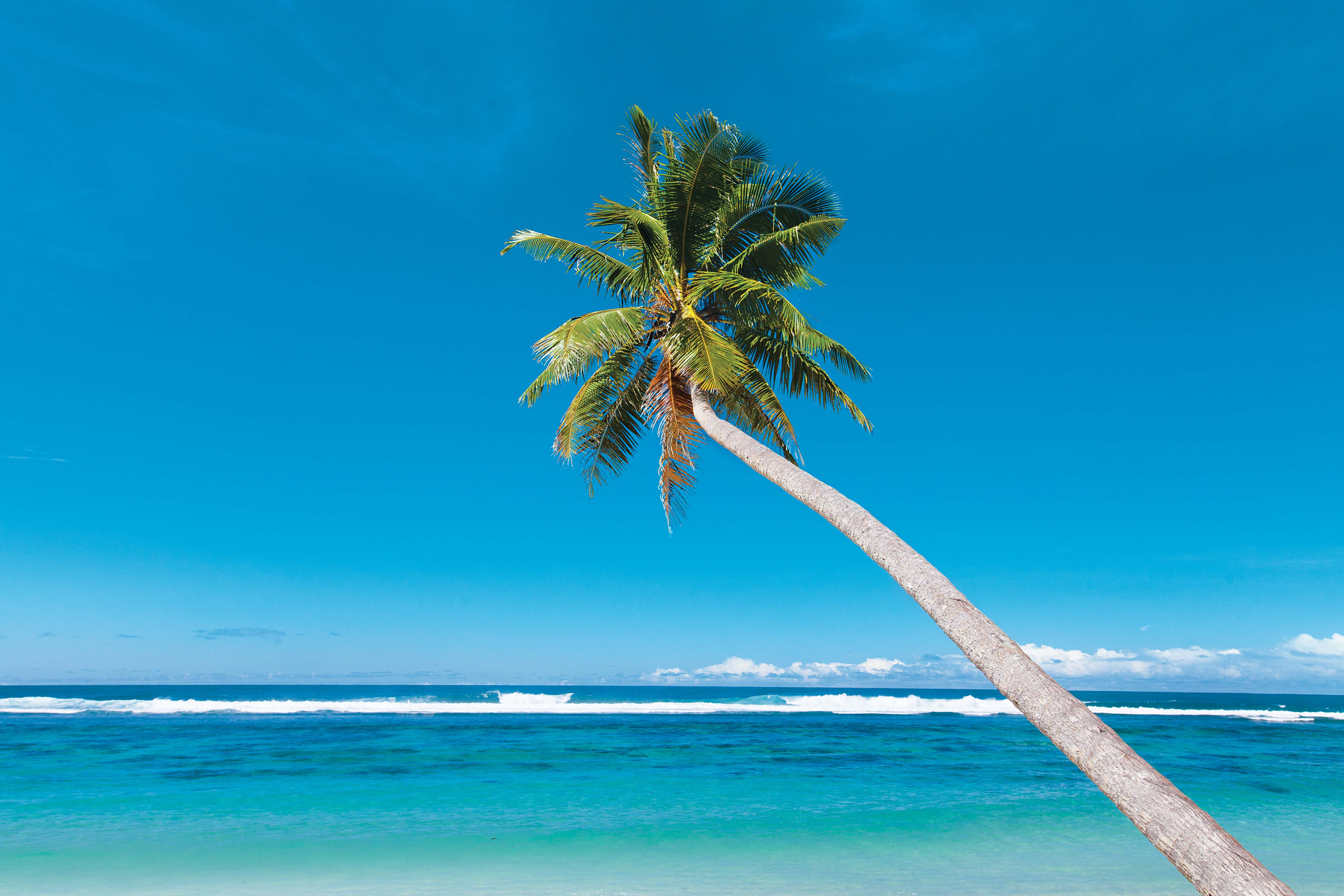Samoa: The South Pacific's Next "It" Destination
If you want a destination where a feast of the world’s freshest fish runs $15, an overwater bungalow costs half the price of Tahiti, the water hosts no noxious species, and the beaches are blazingly white, put Samoa on your list.
It is early afternoon when my guide, Olsen Va'afusuaga, asks, "Shall we take the two-hour or five-hour river walk?" "The two-hour," I answer. I've been to Samoa before. I'm familiar with the "Samoan way," which is an actual thing called "fa'a Samoa."
The people are faultlessly polite and will do anything to please you, but time enters a black hole here, slowing to other-dimensional speed. It's weird and fantastic at the same time. So I'm pretty sure that two hours actually means three, and five means seven. I follow Olsen's tautly muscled back to the Faleseela Riverside Walk. "Walk" and "riverside" are both euphemisms; it's a rock-groping pursuit mostly in the rapids and up vertical rock-face walls encased in vivid green jungle. You won't find any steps, ropes, gates or helmets. This hike depicts modern Samoa, a place where unfettered adventure can still be found in untouched wilderness, and the rules of the Westernized world have not caught on. In fact, Olsen is the only guide who can lead travelers on this particular journey; the trek crosses through his ancestral land.
Samoa is like Tahiti 75 years ago, or Fiji 50 years ago. Right now, it's less expensive than other South Pacific islands, and almost no one is here. Granted, it's harder to get to — the only direct flight is from Honolulu once a week — but once you've arrived, you get a sense of discovery, a feeling of having reached a place before the film crews and honeymooners do.
If you want a destination where a feast of the world's freshest fish runs $15, an overwater bungalow costs half the price of Tahiti, the water hosts no noxious species, and the beaches are blazingly white, put Samoa on your list.
To get the most out of Samoa, you need to be an intrepid traveler. We're not talking Everest summit swagger or Congo River courageous; it just requires patience and flexibility. Infrastructure here is blissfully — sometimes frustratingly — discombobulating. Internet access might be available, and sometimes it might even work. The roads are reliable but rarely have signs. Service is executed with genuine warmth at glacial speed. If you are used to your umbrella-garnished cocktail arriving within three minutes, or if you expect Frette linens, don't visit Samoa. If you want a destination where a feast of the world's freshest fish runs $15, an overwater bungalow costs half the price of Tahiti, the water hosts no noxious species, and the beaches are blazingly white, put Samoa on your list.
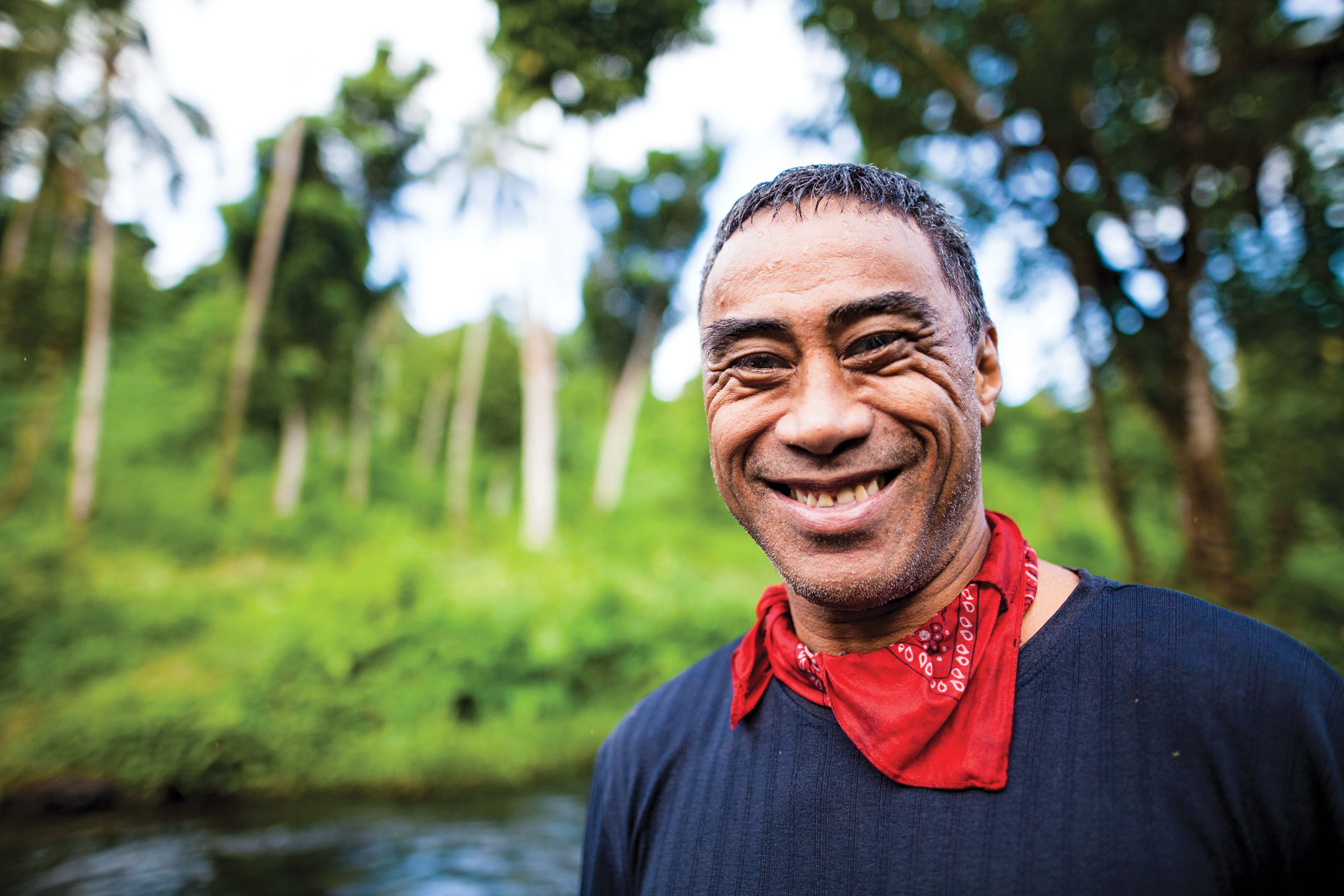
Right now, Olsen, his daughter and I are the only people on this river, a cacophony of exotic birds overhead. We encounter five waterfalls during the climb, and we swim in each one with no regard to time, Fa'a Samoa style. Four hours later, the "two-hour" loop concludes. Olsen then leads me back to his house for Koko Samoa, homegrown cocoa beans roasted over an open fire on a sheet of metal roofing, then ground and mixed with sugar to make a dairy-free hot chocolate brimming with antioxidants.
Olsen lives on Upolu, the archipelago's main island. Formerly Western Samoa, this Samoa should not be confused with American Samoa, the smaller neighboring nation that's an unincorporated territory of the United States. This Samoa belongs to no one. Only one chain hotel can be found in the whole country (the swanky new Sheraton near the airport), and the sole chain restaurant is a McDonald's in the capital, Apia. Most Samoans still live in extended family groups in fales, open-sided houses, and they raise or catch their own food. The whole country is the size of Rhode Island and has 190,000 people, as opposed to the 1.1 million of America's smallest state. A traffic jam in Apia is when a driver stops to chat with a friendand five cars back up.
The locals are raconteurs — it's part of their culture. There's a lot of sittin' and a-talkin' in this country. At the new Aga Reef Resort, owner Apete Meredith talks animatedly about how the island is willing to change but mostly refuses to — and, as the parablegoes, sometimes the young do not know best. "Yes, we have a democratic government and a police force, but the first line of authority still lies with the village elders," he says. "They adhere to the traditional ways. If you commit a crime, you are brought before the tribunal, and your punishment is meted out. For theft or adultery, you are made to kneel under a fine mat in the hot sun, and villagers can whack you with a stick." This probably accounts for Samoa's low crime rate.
There are some things the outside world cannot teach you.
Apete also recounts how his father started this resort project, building a man-made island and a solid bridge to reach it — all by having boulders and bags of concrete carried by hand into the water. It took years. Apete, returning from university in New Zealand and swollen with newfound knowledge, took his father aside. "You're using too much concrete," he told the old man. "It makes no sense. Get an architect and an engineer." His father, a popular chief and politician, bestowed upon him the withering look elders are entitled to give know-it-alls, saying, "I am the architectand the engineer."
Then Apete's father died, shortly followed by the devastating tsunami that hit in 2009. People fled for the hills. Destruction reigned on the south side of the country. In the path of the water, most resorts were swept away. Fearfully, Apete returned to Aga Reef expecting to see everything gone, but his father's island and bridge remained standing. There are some things the outside world just cannot teach you.
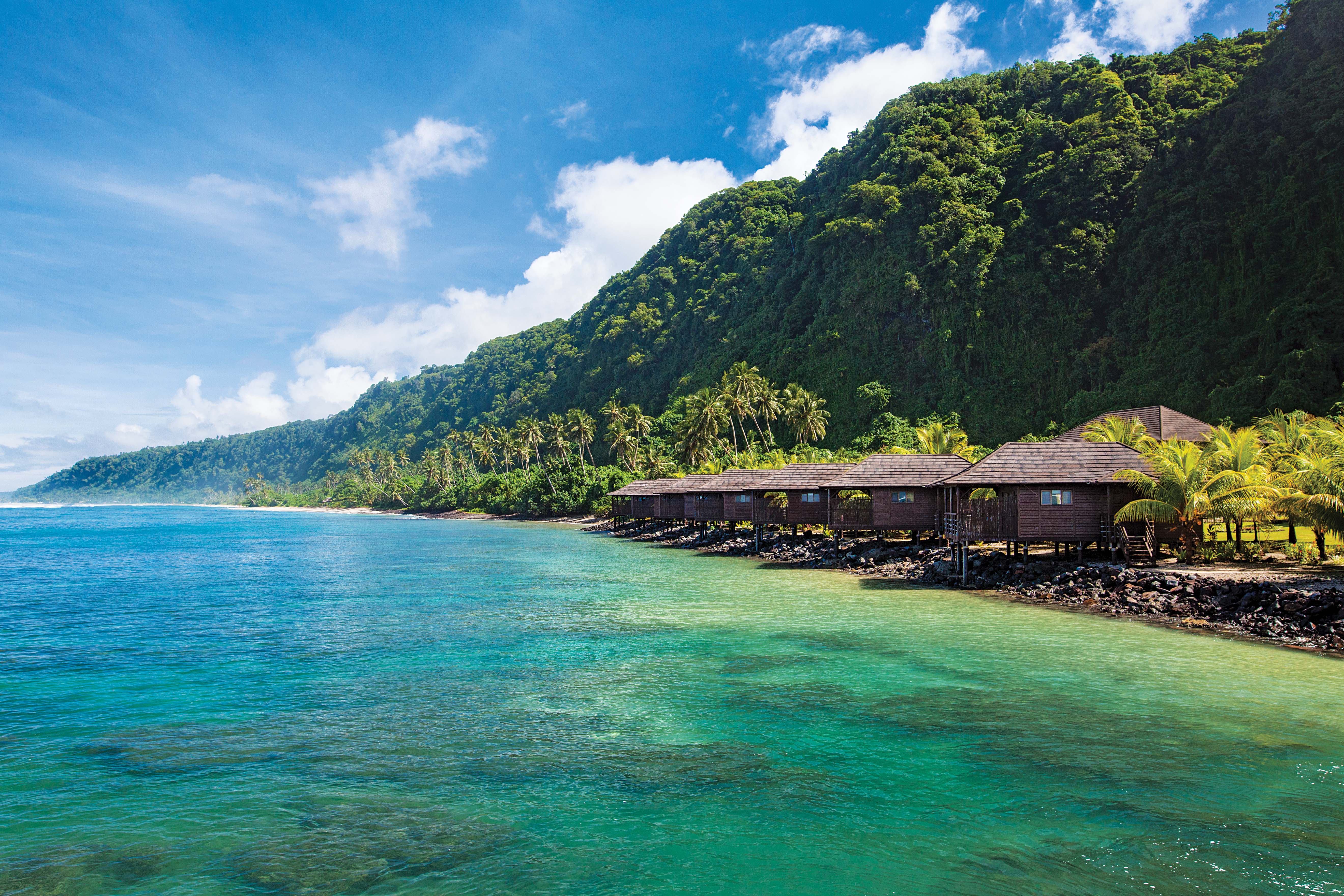
Post-tsunami shock was followed by a severe cyclone in 2012. Samoa has spent the past few years rebuilding, which is another reason to visit now. Coconuts Beach Club, an American-owned resort on the southern coast, was decimated in the tsunami, but it now has six elegant overwater bungalows, as well as several large beach villas and fales. The restaurant, which used to be more of a beach shack, is now a stylish open-air bar and dining room that serves mojitos and local dishes like oka'la, raw fish marinated in lime and coconut milk. The same thing happened with Aga Reef; after the tsunami, Apete built luxury air-conditioned fales on his father's island, with six more facing the lagoon.
One effect of Samoa becoming the next "it" destination is that some locals now require admission to enter their villages and see the sights. A villager sits in a tiny grass hut all day, charging visitors 10 tala (about $5 U.S.) to see the Togitogiga Waterfall or loll in the lagoon of Vavau Beach.
The same entrance-fee practice applies on Savai'i, Samoa's larger, less-developed island, where even fewer tourists venture. Out here, the grass hut is likely to be abandoned if there's a wedding, a rugby match or a fiafia (feast), and income takes second priority.
There's no real town on Savai'i — merely villages clustered along the single road that skirts the 650-square-mile island. The villages are impeccably tidy: gardens lined with painted white rocks, lawns mowed, no litter. The chieftains compete with each other to have the most immaculate village. If there are black holes beyond black holes, then Savai'i's temporal reality is one step further again. It takes about 15 minutes to get a cocktail out here, but by the time I reach this island, the American hamster-on-the-wheel in me has slowed to a crawl. The sunlight playing over the ocean makes for a proper distraction.
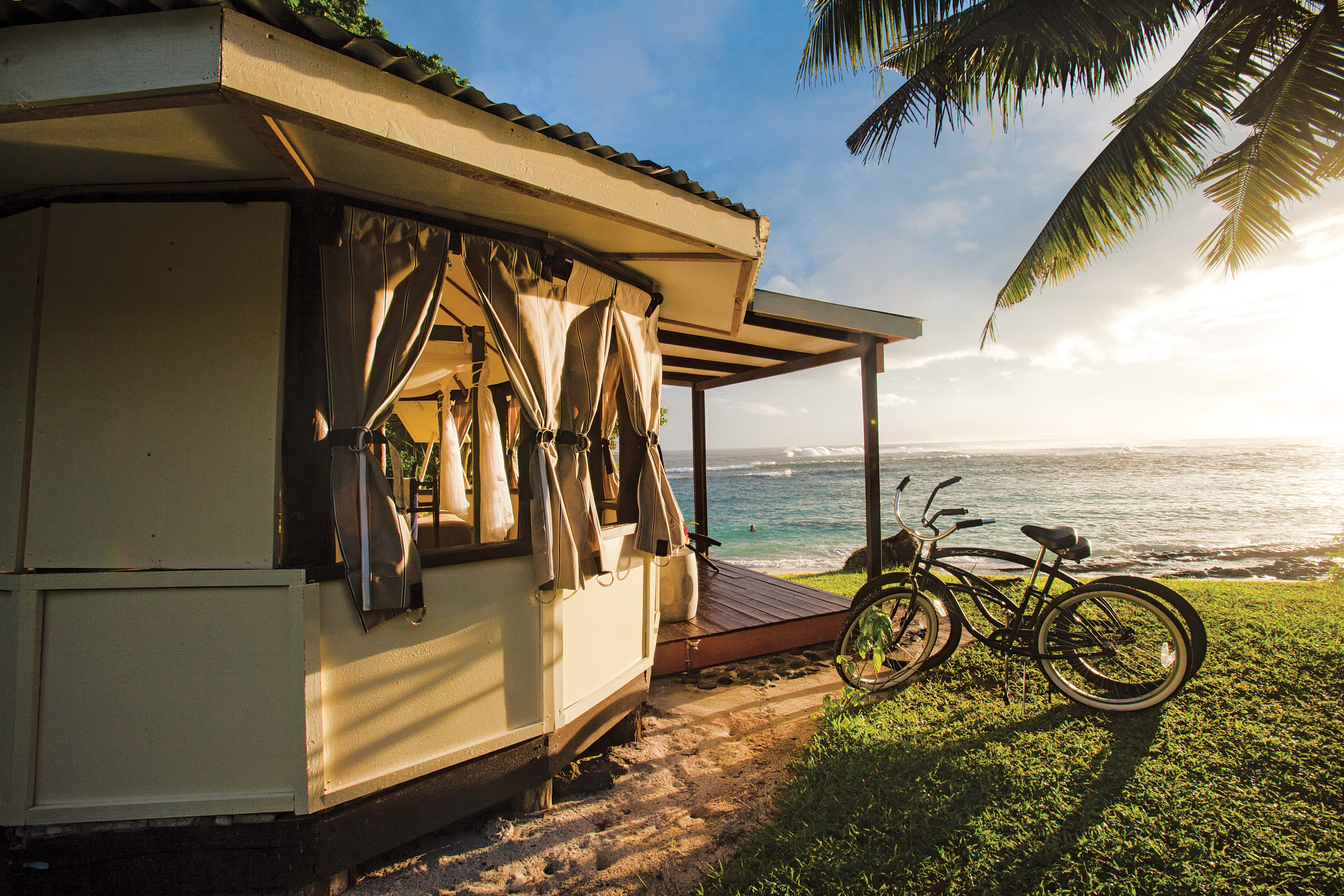
Although plenty of hotels can be found on Savai'i, there's only one high-end place: Aganoa Lodge, on the south side of the island, preferred by surfers with discretionary income. Built with safari-style platform tents, the lodge is located on a private peninsula beside a calm lagoon and a surf break just beyond the protective reef.
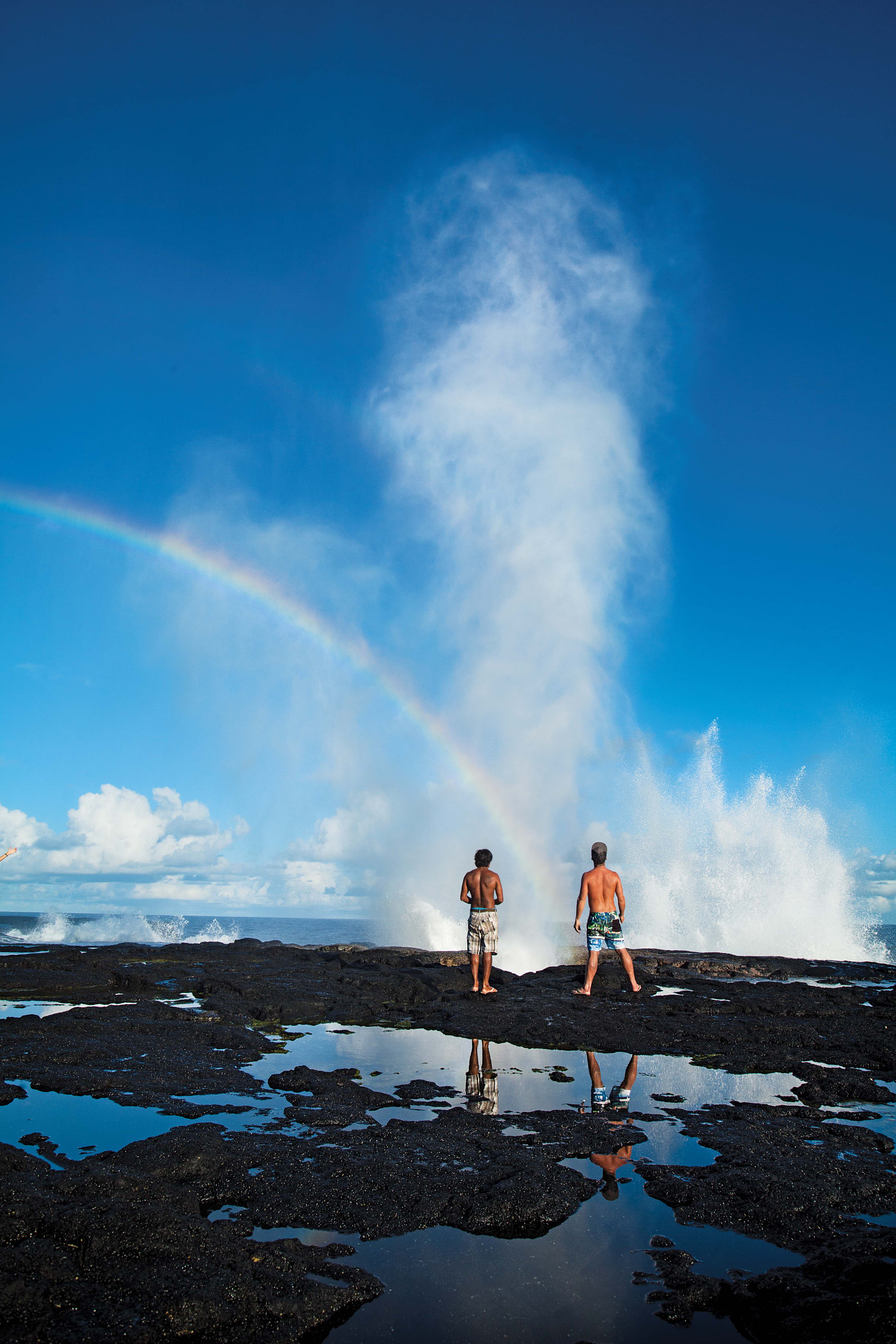
The big excitement for the day on Savai'i's south coast is to head to the Alofaaga Blowholes. Actually, the latter is a sensational activity, especially if you gothere with a local. Cue Lee, a Savai'ian who works at Aganoa Lodge. "Go nearby," he says, in self-taught English. I am to follow him toward the opening of a hole that has been formed in a lava rock shelf protruding over the ocean. "Take dis," he instructs, handing me a coconut bashed from a nearby palm. "I yell, you t'row." A roaring sound builds. As the hole begins to foam furiously, he says, "T'row!" The rock erupts as a massive swell forces its way through a 2-foot-wide hole, shootingmy coconut skyward, creating a double rainbow at its peak.
That night, the staff at Aganoa Lodge throws a fiafia, a Samoan party with an umu feast. A Samoan fiafia is not yet commercialized like in other South Pacific nations, where the dancers are a little too polished, the food prepared unseen. Unlike most Polynesian cultures, Samoans don't use an underground pit oven. Rather, they use glowing hot lava rocks, wrapping most of the food in banana leaves. They cook on the rocks, making sweaty work as the local men, bare-chested, crouch over the fires, handling much with their bare hands. Five hours later, we have a spread fit for a chief: a whole roasted piglet, cooked reef fish, raw fish, chicken, cookedbananas, breadfruit, taro, sweet potato and chard in fresh coconut milk.
The dancing after the meal is chaotic and vigorous, with the Samoans laughing and pulling exaggerated faces. The men leap about athletically, performing war dances; the women move their arms to mimic waves. The scene epitomizes Samoa today: unadulterated Polynesian life among exuberant people whohave somehow managed to sidestep mass tourism and the Westernization of their culture. Get here, quickly, before all that changes.
KNOW BEFORE YOU GO
-
Currency is the Samoan tala. ATMs can be found at the airport and on both islands, but they can be scarce. Carry small local bills to cover entrance fees.
-
If you visit a remote village, neither men nor women should wear shorts. Wear long pants or ask to borrow a lavalava (a sarong).
-
When entering a Samoan fale, take off your shoes outside and sit on the mat quickly if elders are present. Tuck your feet under you or sit cross-legged. Do not point your feet at anyone.
-
Never wear bathing suits or bikinis anywhere but the beach.
-
March to November is the best time to go. Temperatures rarely stray outside the range of 82 to 89 degrees. It rains year-round (hence the lush greenery), but you get more precipitation from December to February.
